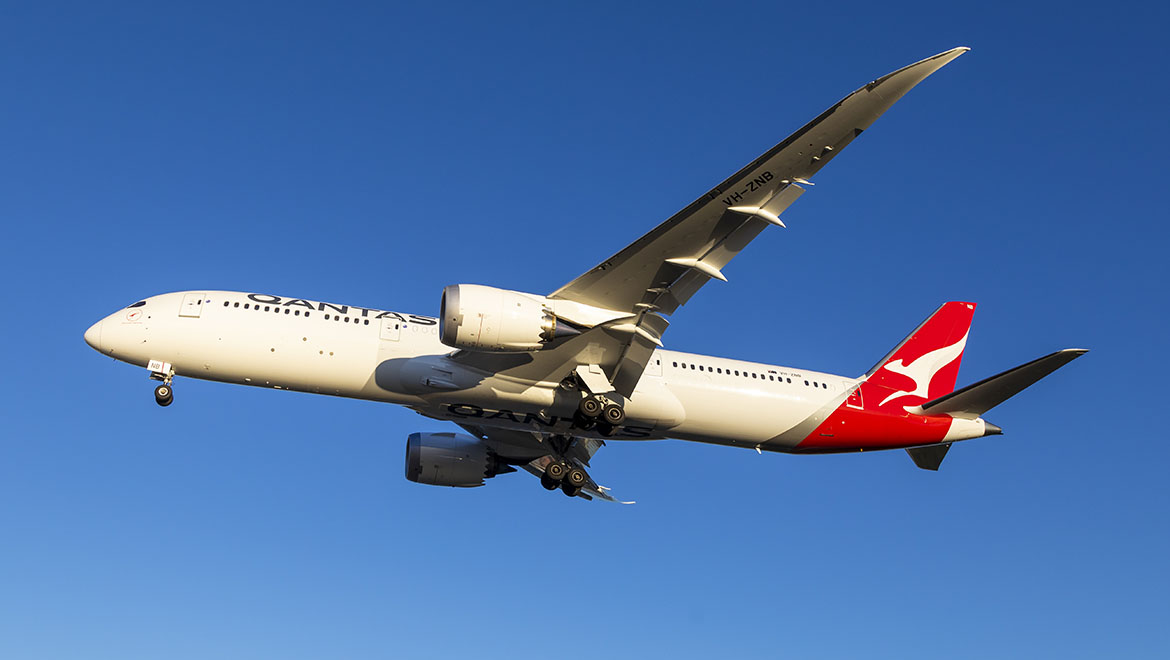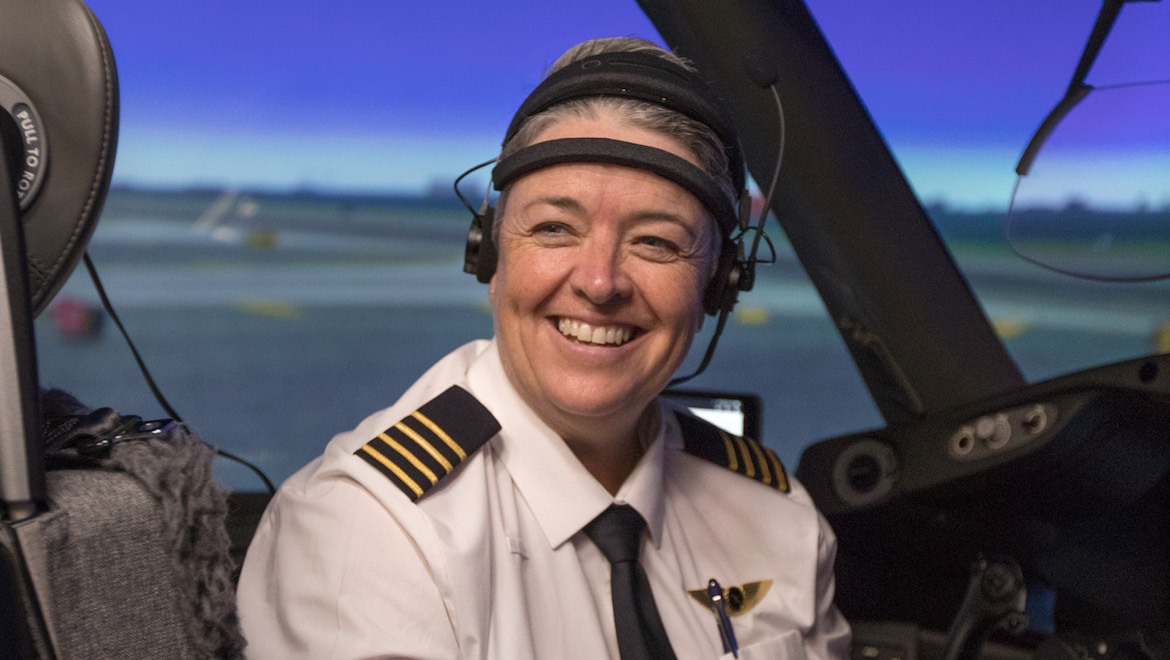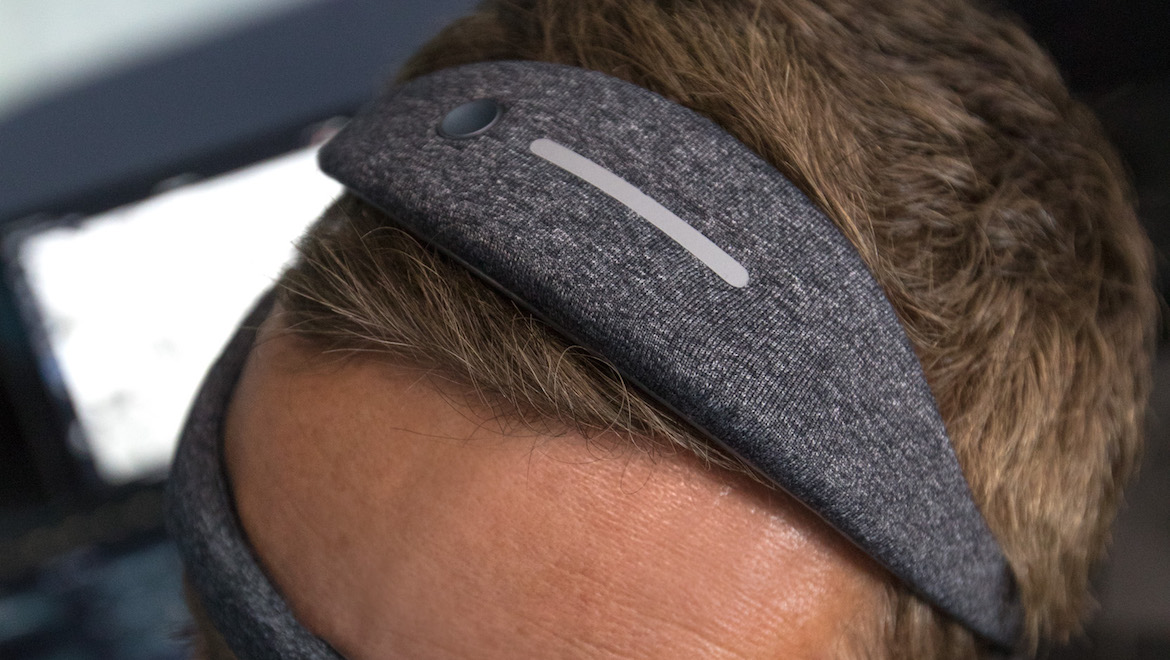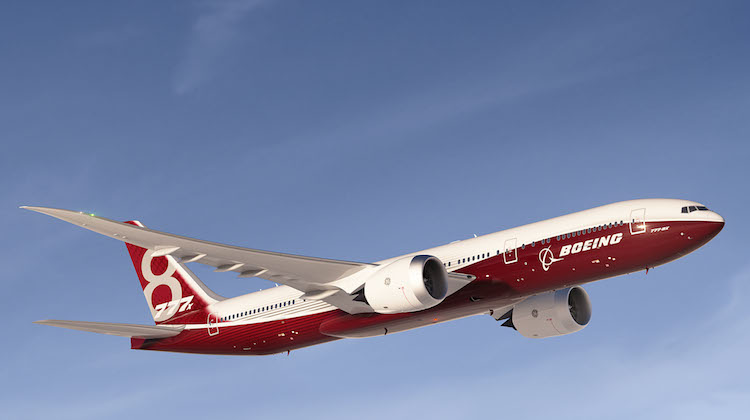
Qantas’s long road towards a decision on whether to launch ultra long-haul flights from 2023 will take another step forward over the weekend, when the first of three research flights takes off from New York’s John F Kennedy Airport.
The 787-9 VH-ZNI Kookaburra operating QF7879 will carry some of Qantas’s very frequent flyers, airline staff including chief executive Alan Joyce, researchers and invited media.
It was due to take off at 2100 on Friday, October 18 (US time) and land in Sydney some 19 hours and 10 minutes later at 0710 Sunday, October 20, according to flight schedules provided by Qantas.
Qantas has scheduled a further two of these research flights – one more from New York and one from London Heathrow – between now and the end of calendar 2019 – as part of its Project Sunrise evaluation.

During these trips, the University of Sydney’s Charles Perkins Centre will conduct passenger research with the aim of reducing jetlag using a wearable device to track movement and light exposure. Passengers will also be assessed during the flight with a test performed on a tablet, among other activities.
Meanwhile, the Cooperative Research Centre for Alertness, Safety and Productivity will consider the impact of these ultra long-haul flights on pilots and cabin crew.
Qantas said on Friday four pilots and six cabin crew would will be involved in the data collection. Pilots would wear an electroencephalogram (EEG) brain monitor, while a camera would be mounted in the flight deck to record “alertness cues and operational activities”.
The pilots have tested the EEG in the simulator to ensure it did not interfere with the aircraft systems and standard operations, Qantas said.


What is not being assessed is the aircraft itself, given the 787-9 is not a candidate to operate these flights from 2023, should Qantas choose to proceed with Project Sunrise and make an aircraft order.
Instead, that evaluation is being conducted back on the ground based on the best and final offers from Airbus and Boeing that were submitted earlier in 2019.
While it has been known for some time Boeing has pitched its still-in-development 777-8X for Project Sunrise, Airbus had, up until recently, been more tight-lipped about its proposal to Qantas.
Until this week, when the Toulouse-headquartered airframer revealed in interviews with various outlets that it had put forward the A350-1000 for Qantas’s consideration.
Airbus head of A350 marketing Marisa Lucas-Ugena said the company was working on tweaks to the baseline A350-1000 that had 8,700nm range when configured to carry 375 passengers.
“The reason why we are going with the -1000 is because it is the airplane that is most suitable for the combination of super long range and a significant payload that Qantas would like to carry on this super critical route,” Lucas-Ugena told Australian Aviation in an interview from Toulouse on Wednesday (Australian time).
“From our point, this is the platform that is closer to be able to accomplish that mission.”
New York-Sydney measured 8,646nm, according to the Great Circle Mapper, while London-Sydney was 9,188nm.

Lucas-Ugena said it was not possible to go into any great detail what changes and modifications were being made to the exisiting A350-1000 to give the aircraft some additional performance “because Qantas hasn’t made a decision yet”.
“But what I can tell you is it is an airplane that is pretty much the baseline airplane and the things that we will have to tweak are pretty much in line with what we’ve done for the A350-900ULR,” Lucas-Ugena said.
“One of the key things on this project is that we can offer an airplane that can do the mission in terms of range and in terms of payload and that we have an airplane that is flying today in a very reliable manner and the things that we need to do to make that mission are going to be available by the time Qantas would like to put this in place, would like to start operating this.
“The key thing is that it is the most modern airplane in this category and it will be more technologically advanced than the 777 even when that that airplane gets certified and gets in service.”
When developing the A350-900ULR used by Singapore Airlines to operate the world’s longest flight between the city-state and New York Newark, Airbus modified the layout of the piping and valves in the fuel tanks, introduced larger winglets and a slight twist to the wing, as well as changes to the flap fairing and belly fairing.
Asked if these sorts of changes were similar to what was being worked on for the A350-1000, Lucas-Ugena said: “Yes, along those lines.”
“Knowing that the -1000 baseline already has some of the things that we incorporated on the -900 because we learned all the lessons on the -900 and the A350-1000 getting into service was already an enhanced version of it,” Lucas-Ugena said.
Earlier in 2019, Airbus outlined it was working on increasing the maximum takeoff weight of the A350-1000 to 319 tonnes, from 316 tonnes currently.
In addition to operating these ultra long-haul services, Lucas-Ugena said the A350-1000 was a “very capable airplane” that could operate anywhere in the network.
“That is the beauty of the A350, both the -900 and -100. Both the versatility that it offers and the fact that it is extremely efficient and capable,” Lucas-Ugena said.
It was also an aircraft that was already in service with British Airways, Cathay Pacific, Qatar Airways and Virgin Atlantic and therefore would be available to Qantas in 2023.

That sits in contrast with the 777-8X, which has an unknown entry-into-service date after Boeing in August pushed back the timetable for the program from 2022 to an unspecified future date.

Despite the 777-8X – which the Boeing website lists as having up to 8,730nm of range and a passenger capacity of 384 passengers in a two-class layout – not being ready in time for Project Sunrise, Qantas chief executive Alan Joyce said in August Boeing had submitted a “compelling offer” to deal with the delay to the program.
And Boeing Commercial Airplanes senior managing director for marketing Darren Hulst said the Chicago-headquartered airframer was continuing to develop the specific timing of when the 777-8X would enter service.
“Our timetable on the 777-8 obviously is still under consideration,” Hulst told reporters in Sydney on Wednesday.
“I would say we are absolutely committed to the 777-8 as a product and as a model but it is really more of when the combination of the demand from our customers and how it aligns with the design and production system for the 777-X as a program.
“We will continue to develop when specific timing is but absolutely committed to what it can do and working with Qantas to make sure we have a solution that fits their needs as well.”
VIDEO: A Qantas video looking at the work behind the three research flights as part of the Project Sunrise evaluation.










